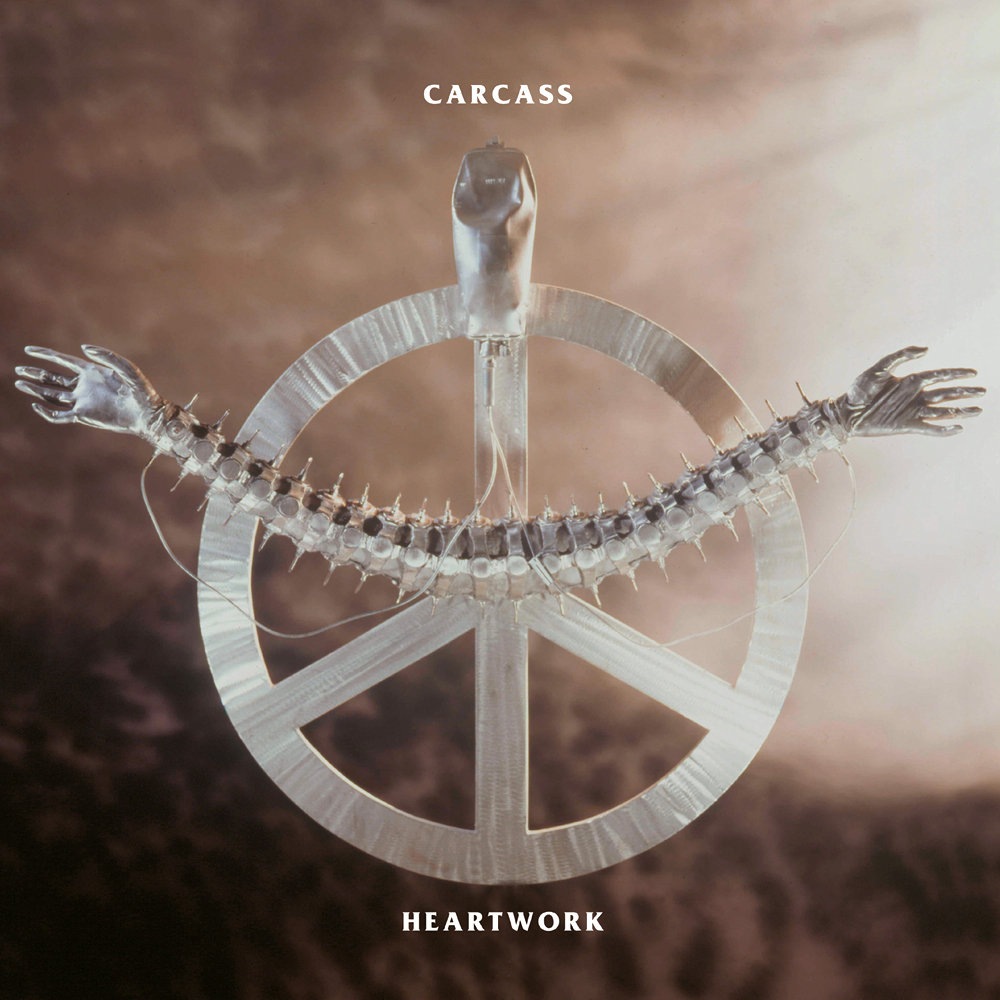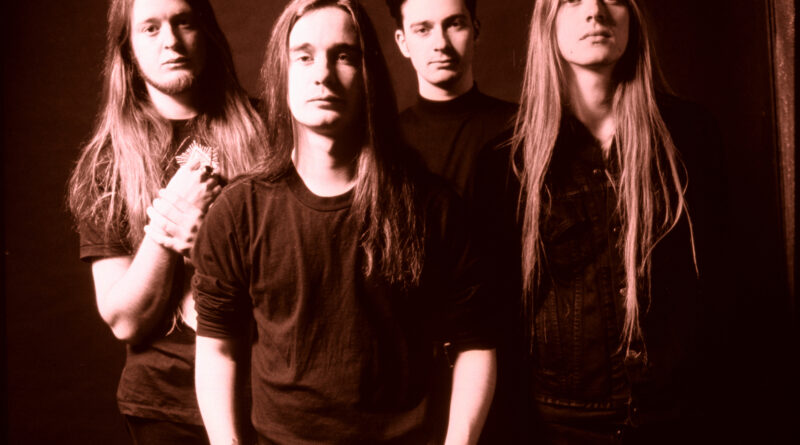HEAVY MUSIC HISTORY: Heartwork – Carcass
In 1993, the UK death metal scene was still almost in its infancy. Despite the sub-genre effectively being created by VENOM in Newcastle, North East England in the early 80s, it was very much developed into a recognisable ‘movement’ in the USA a couple of years later. SLAYER, MORBID ANGEL, POSSESSED and DEATH all took the foundation created by the weightier side of the NWOBHM invasion and built on it in terms of speed, brutality and technical ability to form the beginnings of death metal as we might think of it today. Over in the UK, in the late 80s, NAPALM DEATH and CARCASS (the latter formed by ex-NAPALM DEATH guitarist Bill Steer) were flying the flag of extreme music, developing the faster, more oppressive aspects of the genre into a blend of hardcore punk and death metal that became known as grindcore.
Despite support from BBC radio legend John Peel, this form of death metal was more niche and musically obtuse than the US equivalent and was certainly not something that was spreading to the masses in any way. If anything, fans of UK death metal were looked on more with amusement than anything (just ask early 90s fans of BOLT THROWER, a band far from the Metal Twitter legends of today, who were instead more closely associated with the nerdiness and social isolation of the Games Workshops from whence they came).
In 1993, CARCASS were hoping to capitalise on the minor success previous album Necroticism – Descanting the Insalubrious and the promotion of Peel had brought them. That album, like their earlier work, had a more ‘old school death metal’ sound, both in terms of songwriting, delivery and production. Still a great album, it only contains a few hints of what the band would achieve on its follow-up.
Released in October 1993, Heartwork – the band’s fourth album – broke completely new ground. A combination of old school death metal, traditional melodic metal, thrash and grindcore, the album has gone on to become widely respected as a masterpiece of extreme music. Some would argue that it created the subgenre of melodic death metal almost single handedly.
Whilst critics lapped it up on release, fans of the band’s earlier work were a little bemused by the change in sound that met them. Where were the completely unpronounceable medically-themed song titles, the grimy low end, the blast beats, the sprawling song structures and frequent tempo changes?
Opening track Buried Dreams raised all these questions and more. Lyrically, the band were still exploring suitably dark territory (“welcome… to a world of hate” spews a feral-sounding Jeff Walker, like some sort of Anti-Lennon) but, in terms of overall sound, here was a nod to commercial ‘big’ metal that simply hadn’t been part of CARCASS’ makeup before. Musically, the track starts off like a nastier For Whom the Bell Tolls; a mid tempo, stomping riff, tom beats and china crashes – even an (almost) sing-along chorus. Some even pointed out that the more direct songwriting approach, adopting a clear verse-chorus-verse structure, was similar to the changes made by METALLICA on their seminal Black Album.
Other than the songs themselves, this change in sound was down to the production work of extreme metal titan Colin Richardson, whose earlier work with NAPALM DEATH, BRUTAL TRUTH and, erm, CARCASS had seen him honing and refining the way he worked with extreme music, tracking guitars and drums differently to create a clearer sense of separation between the instruments, thus avoiding the traditional ‘sludgy, everything-together-all-once’ sound that had become synonymous with earlier death metal. With this album, it was almost as if Richardson thought: “Hang on – what if I apply classic rock recording techniques to an extreme metal album?” (See his later work with MACHINE HEAD, FEAR FACTORY, SLIPKNOT and TRIVIUM to see how this eventually worked out for him). There is a more clinical, clean, even cold, feel to the production here and the album benefits from it. The guitars crunch and lead guitars pierce while Walker’s signature spitting vocals sit comfortably on top of it all. No longer were we straining to figure out what – or even if – the vocalist was singing.
Second track Carnal Forge returns to a thrashier sound to begin with, Ken Owen’s blastbeats, rippling tom fills and tight double bass work bringing fans back to familiar territory. The addition of Michael Amott (who would later form ARCH ENEMY) on Necroticism… really makes its impact here though, with his melodic guitar breaks and twin lead attack alongside Bill Steer giving this song – and the album as a whole – a more melodic, almost commercial, feel. Something special was clearly brewing.

Songs now considered classics all follow in a similar vein – No Love Lost, Embodiment, Arbeit Macht Fleisch – highlighting the new groove that underpins the record, courtesy of Owen and Walker’s wonderfully tight rhythm core, while the title track is probably as close to a bona fide extreme metal hit as the band ever got.
Unfortunately, despite critics in the metal press hailing the record as a true work of (he)art, the album didn’t reach the audience that Earache Records had hoped, especially following the deal they made to release the album through Columbia Records in the USA. At the time, the wider world just wasn’t ready for a new, ‘commercial’ version of grindcore and the slight change in direction meant that the band struggled to find the right live audience to expose it to. In the UK, the band initially toured the record as support act to ICE-T’s sort-of-hardcore band BODY COUNT, leaving fans of both acts baffled.
Infighting amongst band members ensued, with Amott leaving immediately after the album’s release and the rest of the band calling it a day before their 1996 follow-up Swansong was even out. Years later, though, the band reconciled and reunited for 2013’s incredible Surgical Steel, which felt very much like the real successor to Heartwork. Ken Owen still made a sizeable contribution to the writing and recording of that record, despite his ongoing recovery from the brain haemorrhage he suffered in 1999, while his replacement behind the kit Dan Wilding somehow still managed to build on the stellar foundation and groove that Owen had laid down all those years earlier.
Heartwork, then, is very much the sound of a band way ahead of its time and it is wonderful to see that band today, enjoying the truly unique, powerful and enduring legacy it holds among fans of heavy music the world over.

Heartwork was originally released on October 18th 1993 via Earache Records/Columbia Records.
Like CARCASS on Facebook.

